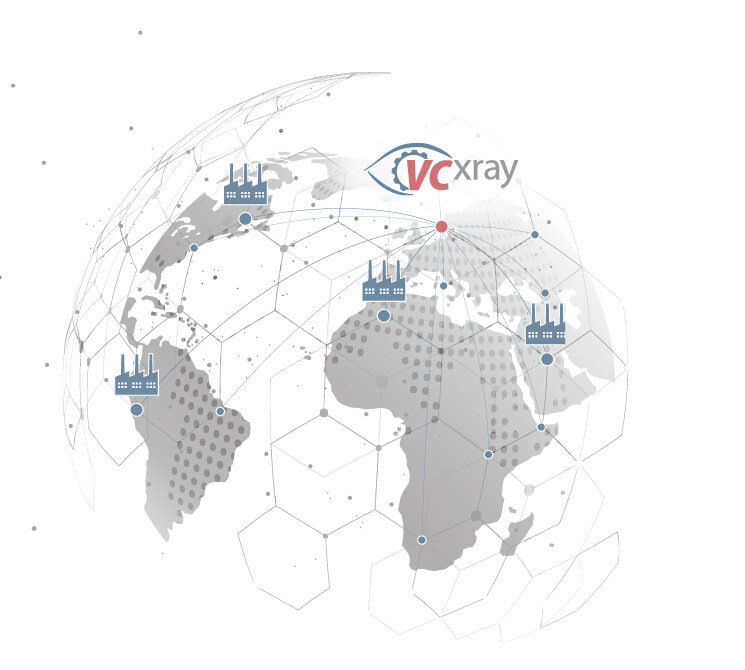
X-ray inspection systems for art and culture
Materials testing in the field of art and culture is used to analyze the composition of materials in works of art and cultural objects. It enables the identification of pigments, dyes, metals and organic materials as well as the dating of objects. Materials testing aids in restoration, forgery detection, and cultural heritage research.
X-ray technology makes it possible to perform non-invasive examinations of works of art, historical artifacts, and cultural objects without damaging them.
Art restoration and conservation: X-ray examinations can help to explore the internal structure of paintings and sculptures. By examining the layers of material beneath the surface, conservators can identify past damage or repairs. This allows them to make more informed restoration and conservation decisions.
Computed tomography (CT) is increasingly being used in the field of art and culture as a non-invasive technique for the examination and analysis of artworks and cultural artifacts. Using CT, it is possible to generate three-dimensional models of the specimen.
CT can be used to examine the interior of ancient statues and sculptures without damaging them. CT images allow conservators to identify internal structures, cracks or other damage and make informed decisions about restoration.
CT enables non-invasive examination of mummies and archaeological remains. Through fluoroscopy, information can be obtained about the age, cause of death, grave goods, and condition of the objects without opening them.
Fragile scrolls or historical documents can be scanned using CT to analyze the contents without unfolding or damaging them. This can reveal hidden information or writings that have faded or been covered over over time.
CT is used to analyze archaeological finds such as ceramics, metal objects or ancient weapons. This helps to identify their internal structure and any anomalies, which in turn provides insight into their manufacturing techniques or intended uses.
CT can also be used to examine paintings. Fluoroscopy can reveal underdrawings, sketches, or alterations hidden beneath the paint layer that have been made over time.
CT can also be used to examine historic buildings and monuments. CT analysis can provide information about the internal structure, any damage or changes over time, without the need for invasive procedures.
CT technology offers researchers, conservators and scientists a valuable way to explore, preserve and protect cultural heritage without compromising the integrity of artifacts. The non-invasive nature of CT makes it a valuable tool for the analysis and study of art and culture.
The use of X-ray inspection in the field of art and culture presents several challenges that must be considered. Here are some of the key challenges:
X-ray examinations use ionizing radiation, which can pose health risks. For both the staff performing the exams and the artwork itself, proper radiation protection is essential to minimize exposure. This is where it is important to work with a qualified provider. Some artworks and cultural artifacts can be sensitive to X-rays. In particular, paper-based objects, organic materials, or certain pigments could be damaged by the radiation. Therefore, thorough examinations must be conducted in advance to determine the suitability of an X-ray inspection for each specific artwork.
Some artworks may have extremely complex structures that make it difficult to obtain clear and meaningful CT or X-ray images. Evaluation of such images requires special expertise and careful interpretation. In addition, CT equipment and x-ray facilities suitable for artworks may not always be readily available or could be expensive. This may limit the options for x-ray inspection for artworks, especially for smaller museums or institutions with limited resources. To address this, VCxray provides access to well-equipped laboratories through its testing service.
Despite these challenges, X-ray inspection offers a powerful and valuable method for examining and researching works of art and cultural artifacts, as long as it is used with appropriate care and expertise.
VCxray offers a comprehensive portfolio of solutions for use in the field of art and culture. This includes portable equipment for use in the field - for example in archaeological excavations, robust 2D X-ray systems for demanding environments, and high-end Computed Tomography systems. From small benchtop systems for sample analysis to large-scale MeV systems capable of scanning entire statues, there is a solution for every application and budget.
If only single analyses are required and the investment in an own device is not justified, VCxray also offers testing services in several laboratory locations. There, our experienced X-ray experts take care of component handling, image acquisition, evaluation, and interpretation of results.
Contact us today
Gain unprecedented insight with our state-of-the-art X-ray and CT systems. Contact us today to learn more about our material inspection solutions for art and cultural heritage. Our team is always available to answer your questions and develop a customized solution for your needs.

With our Service centers and Hubs worldwide,
we will complete your staff with maximum
efficiency in your specified time frame and
without interrupting your operations.
No matter where you are, we are never far away.
Our knowledge and experience
maximize your company‘s profits.